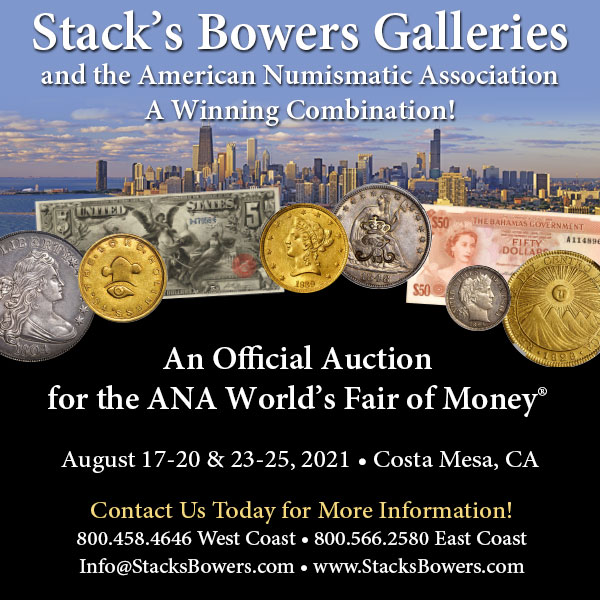
PREV ARTICLE
NEXT ARTICLE
FULL ISSUE
PREV FULL ISSUE
EAST CARIBBEAN STATES $100 BANKNOTESThe World Banknote Auctions Sale 12 ends July 22, 2021, and lots are open for bidding on the firm's website. Founder Dennis Hengeveld published an article about the East Caribbean States $100 Banknotes. Here's an excerpt. -Editor
East Caribbean States: An Introduction
The East Caribbean Dollar
During its initial issuance period the notes were no different, regardless of the location they were issued. The only changes made during this period were the signatures on the front of the note and the aforementioned list of countries that were part of the Currency Union. Starting in 1983 after the East Caribbean Central Bank was founded, a circled letter was overprinted in black on the left side of the note, which signified on what island the notes were initially issued. Regardless of letter all notes were valid for circulation on each of the various islands. All varieties of the first issue $100 (Pick-16) are very scarce to rare. Population figures are low and offerings of any variety is relatively uncommon. Some of the scarcer varieties only come up for sale when major collections are sold. For example, a survey of auction records show that in the past decade Pick-16g, the variety with "A" overprint (for Antigua) has only been offered twice at public auction in uncirculated condition, and only three times in circulated grades. The article also covers the Second and Third Series designs. -Editor Collecting the $100 Denomination The entire East Caribbean Series is highly collectible, and the series includes some very underrated varieties that have proven to be very difficult to find. As a general rule, the $100 denomination is the scarcest denomination, although there are some exceptions, depending on the series and island of issue. Putting together a complete variety set of $100 notes from the East Caribbean States is a very challenging goal. Some varieties, particularly in the first few series are very difficult to find in any grade, and some early signature varieties of Pick-16 may be unreported to this day. More modern issues, while generally available at a more reasonable price point have continued to be scooped up by eager collectors, and certain varieties issued in the late 1990s and early 2000s have started to become very difficult to find. With the paper $100 now out of circulation supply of older varieties is limited, and with many of these islands being popular tourist destinations we can see demand to increase in future years. A good opportunity is to put together a type set, which while challenging, is not impossible. The four issues prior to 1994 will be the most challenging, particularly in higher grades. To view various examples of the $100 from the East Caribbean States presently listed in our auction, please check our website: www.worldbanknoteauctions.com.
To read the complete article, see:
Wayne Homren, Editor The Numismatic Bibliomania Society is a non-profit organization promoting numismatic literature. See our web site at coinbooks.org. To submit items for publication in The E-Sylum, write to the Editor at this address: whomren@gmail.com To subscribe go to: https://my.binhost.com/lists/listinfo/esylum All Rights Reserved. NBS Home Page Contact the NBS webmaster 
|


